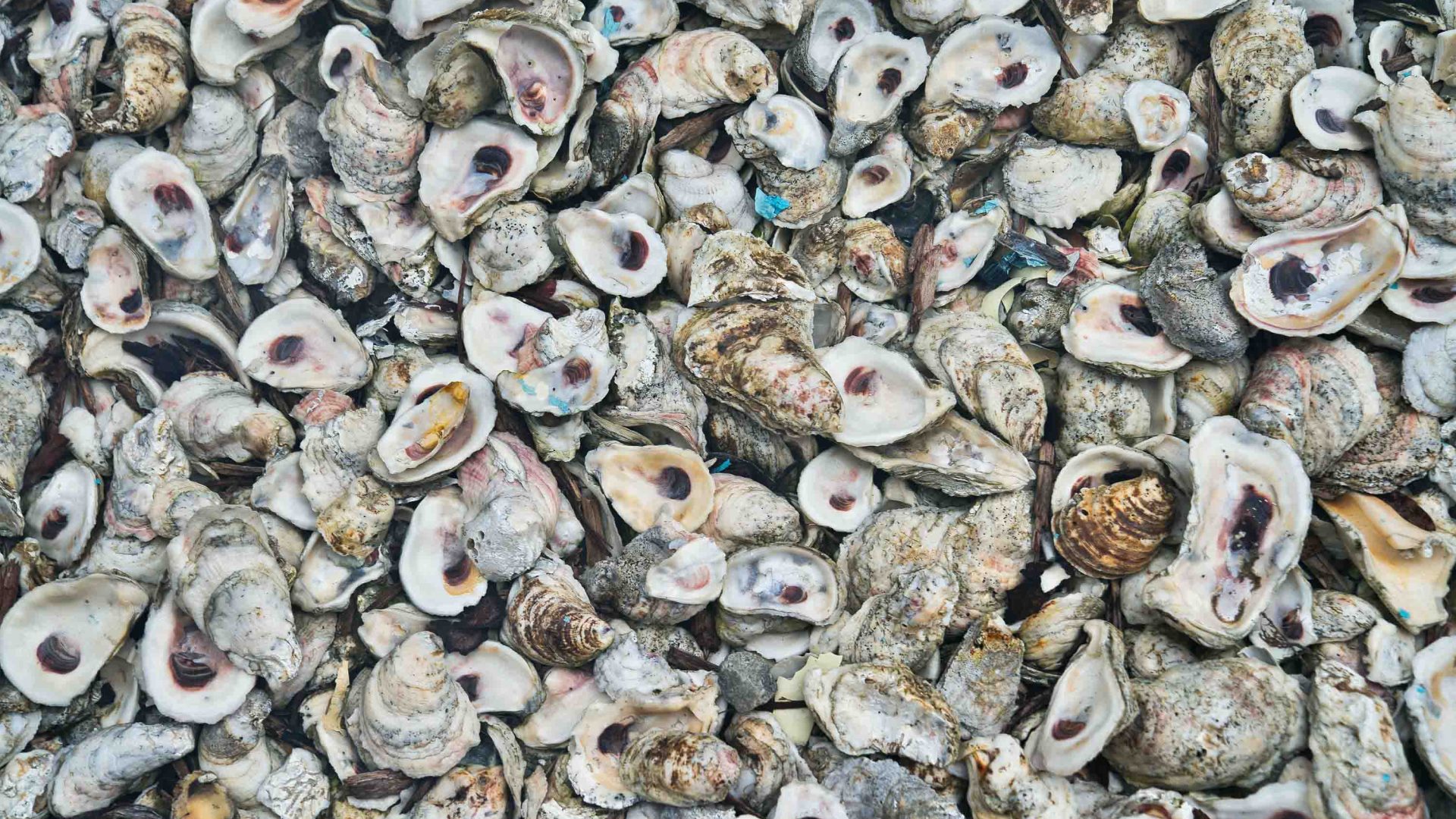
Almost 100 years after construction on Brisbane’s Howard Smith Wharves provided locals with relief work during the Great Depression in the 1930s, this posh precinct is now contributing to Moreton Bay’s relief and restoration.

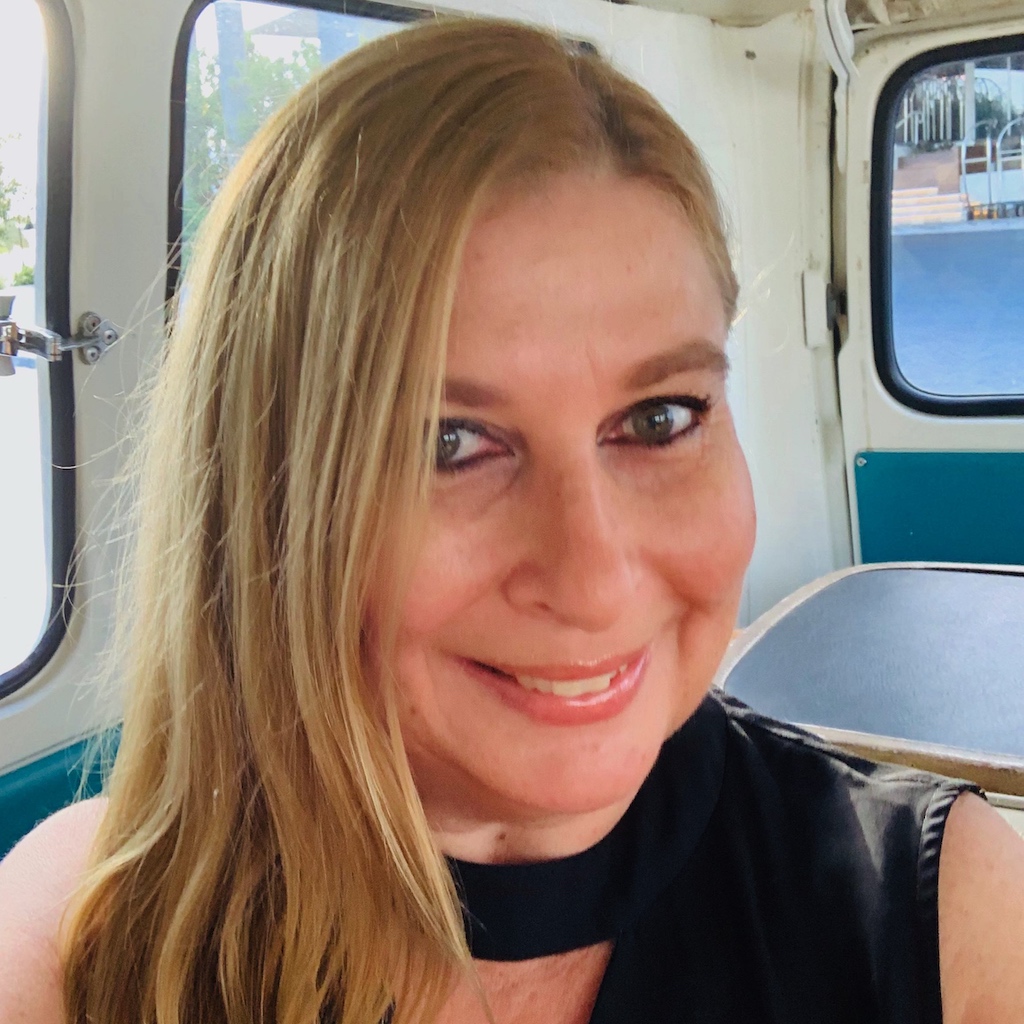
Almost 100 years after construction on Brisbane’s Howard Smith Wharves provided locals with relief work during the Great Depression in the 1930s, this posh precinct is now contributing to Moreton Bay’s relief and restoration.
Among the jingle and clang of heavy industry, and almost as far as the Port of Brisbane’s claw stretches towards Moreton Bay, a group of volunteers is scuffling like hermit crabs, scrubbing, packing and stacking discarded oyster shells in preparation for their second coming.
Robbie Porter, special project officer of shellfish restoration at the not-for-profit OzFish says in the 1800s, when the first Europeans came to Brisbane, Moreton Bay was “chockers” with shellfish reefs—believed to be in endless supply. But by 1887, Queensland passed the first environmental law in the world’s history because all the shells were decimated. “Shellfish are really great for making cement and most of Brisbane is made from shellfish reefs. All of our sandstone buildings have shellfish and quite a few of our older houses have them too,” Porter says.
The shellfish lost to the built environment of Queensland left a gap in the ecosystem. Oysters filter water, acting as natural purifiers, and they provide a habitat for myriad other species. After decades of seeing the compromised ecosystem and the ramifications of losing biodiversity critical to the bay, Queensland decided to try and protect what was left of it.

“Moreton Bay Marine Park was declared in the ’90s, but there was no legislation for restoration work—it was all about conservation,” says Porter. So OzFish, Australia’s only fishing conservation charity, started working with Howard Smith Wharves (HSW) on the largest community-driven shellfish reef restoration project in the country, using discarded oyster shells from its upmarket restaurants to rebuild the foundations of Moreton Bay.
“We saw a good push towards end-of-use oyster shells. HSW had a waste product that was going to landfill and we needed more shell,” Porter adds. The more oysters eaten, the more shell available to rebuild the reef.
To date, a staggering 96 percent of Moreton Bay reefs have been destroyed. This threatens water quality and the survival of marine life. And while reef restoration using oyster shells isn’t a new concept—it has been deployed in the United States in places like New York’s Hudson River—its execution differs vastly here in Australia.
Inspired by a suggestion from the Indigenous Kabi Kabi traditional landowners, Porter and his volunteers designed these reefs in a triangular shape to great success. While it is common in the US to use plastic onion bags or steel to secure reefs, OzFish is using mild steel to create Robust Oyster Baskets (or ROBs). They have been designed to break down after approximately two years to leave a solid structure of living shellfish.

The process begins here, on the banks of the Port of Brisbane Lake—home to numerous birds such as swamp hens, cormorants, magpie geese and native swans—where those triangles are packed before being deposited into Moreton Bay. For Porter, whose grandparents introduced him to fishing in Moreton Bay as a child, this project is almost personal. “I think a lot of people, like myself, see that we’ve stuffed up our bay. Coming down and actively participating in restoration provides a good sense of well-being,” he says. “I’m so passionate about the water and when I heard about the problem it was like a calling. It wasn’t even really a decision.”
When you break down the math, for every oyster shell donated, 10 baby oysters are created. It’s a system that serves to inspire others, and to continue pushing its own boundaries when it comes to urban sustainability.
OzFish invited a team from Griffith University, headed by lead researcher Marina Richardson—an expert in shellfish biology and ecology—to conduct a scientific assessment to verify the number of shellfish and other animals since the project commenced. Findings reveal that three million new oysters are living on the 4,000 ROBs that have been deployed.
“The benefits of restoring oyster populations in these shallow seas are enormous. Oyster reefs disappeared before living memory and were the kidneys of our waterways,” Richardson says. With an ambitious goal to restore 100 hectares (247 acres) of shellfish reef in the Bay over the next decade and beyond, they are already well on their way.
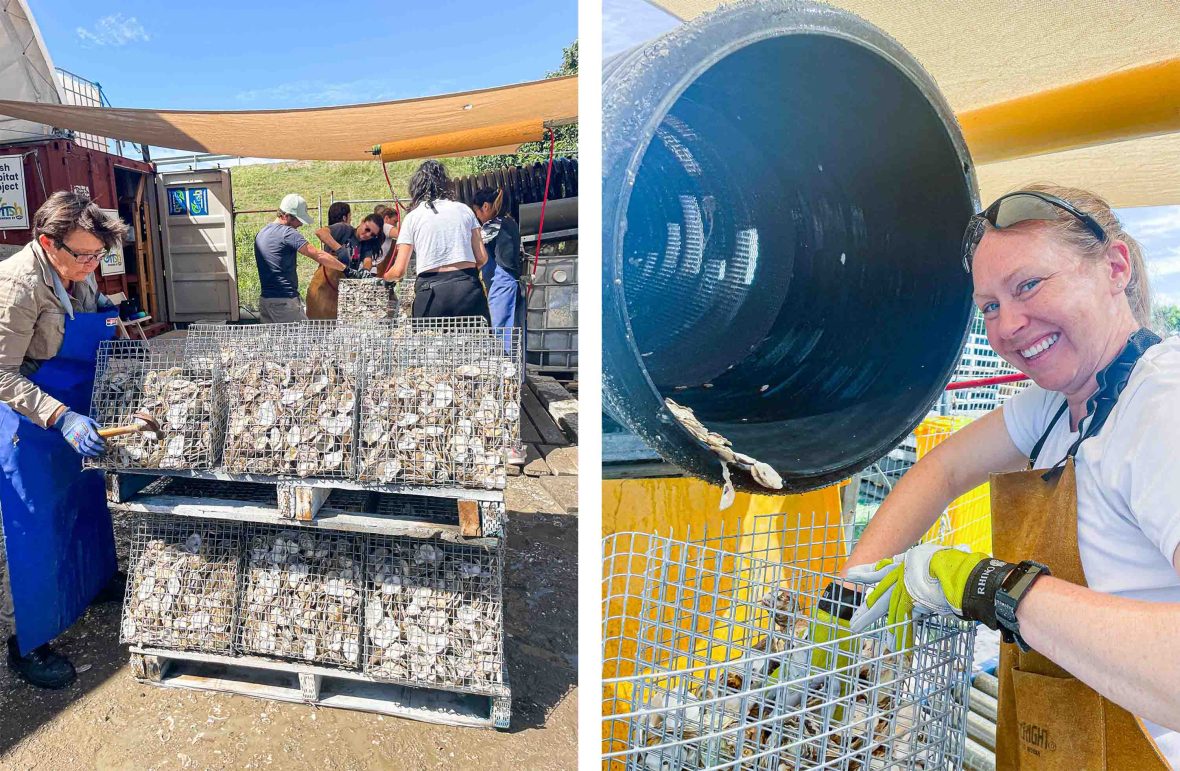
Back at Howard Smith Wharves, where diners unwittingly contribute to the health of the bay while they sip on champagne and slurp oysters, HSW CEO Luke Fraser says they direct 95 percent of waste away from landfill. These initiatives, like their partnership with OzFish, are thanks in part to a sustainability team of 17 people who work with its restaurants, bars, breweries and cafes to separate out 17 different waste streams.
“In the hospitality business, we found 50 percent of all waste we generate is food waste. We can take half of that and compost it here at the wharves and give that to local farmers. There is some food, such as oyster shells, we can’t compost,” Fraser says. “Our head of sustainability was doing a lot of research and that’s when we discovered OzFish a couple of years ago. Last year, in 2022, we donated over three tonnes of oysters to them.”
When you break down the math, for every oyster shell donated, 10 baby oysters are created. It’s a system that serves to inspire others, and to continue pushing its own boundaries when it comes to urban sustainability.
“Being on the Brisbane River’s edge, the health of the waterway is really important to us,” Fraser adds. “We’ve now set ourselves a really bold target to be the most environmentally sustainable precinct on the planet.”
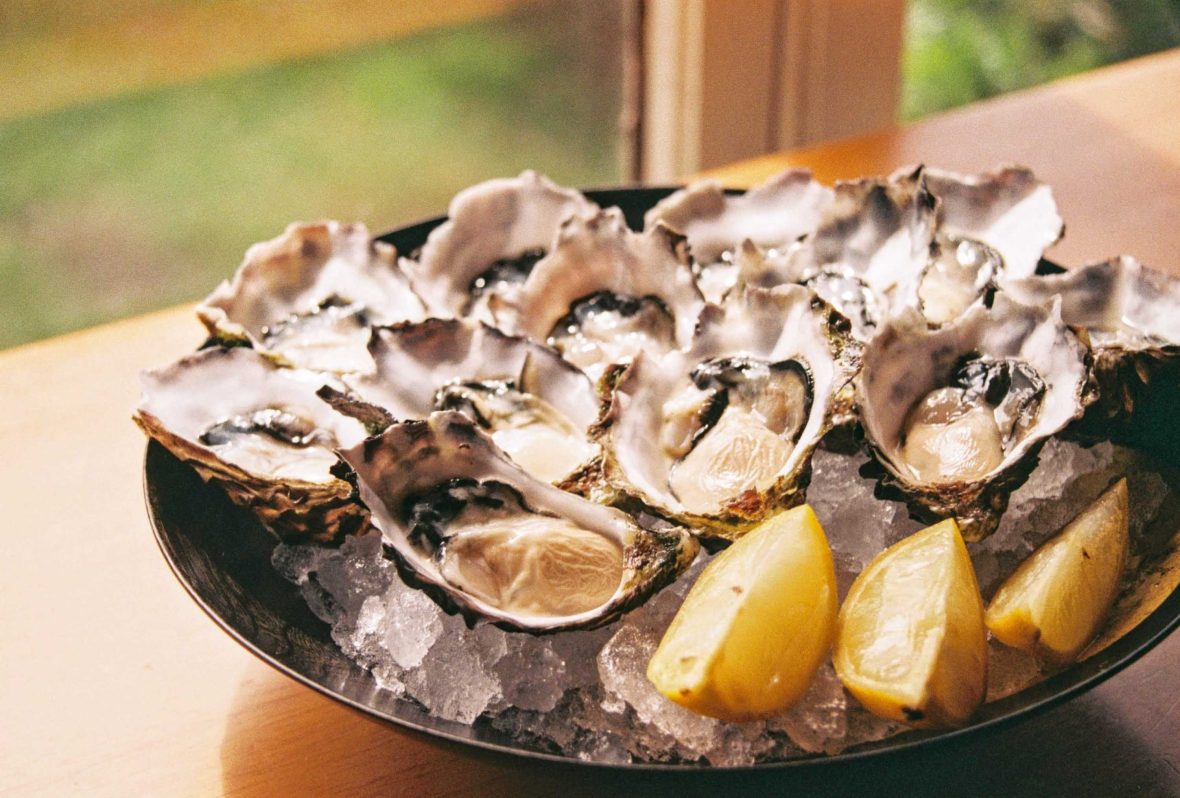
Walking down the banks of Port of Brisbane Lake, the mountains of mollusk shells, which once kissed the mouths of Brisbane diners, no longer look like heaps of detritus. They stand sunbaking, waiting to be loaded into a makeshift washing tube that chatters like crazed seagulls. Then, it’s back to the bay. A reincarnation. A second chance at preserving the magic of Moreton.

Christine Retschlag is a multiple award-winning Australian travel journalist with 34 years of experience, who is working and living in Australia, Hong Kong, London and Singapore. At home, you’ll find her on the back deck of her Queenslander cottage with possums, kookaburras and the resident carpet python who makes the occasional cameo appearance.


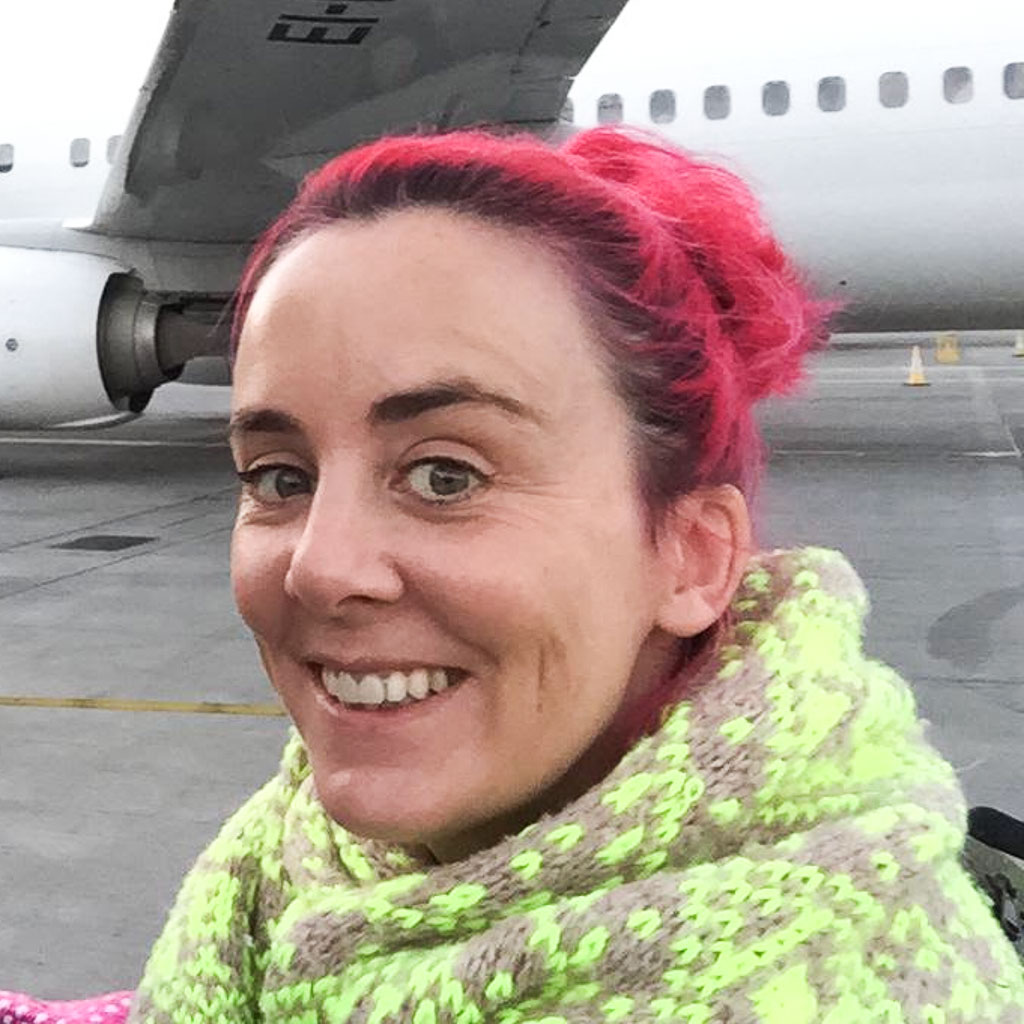





Can't find what you're looking for? Try using these tags: